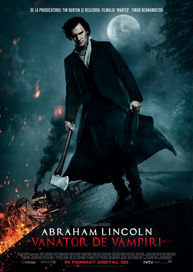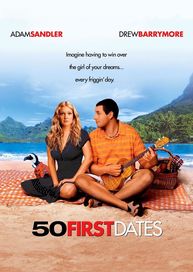|
07:00
|
Mozart - Piano Concerto No. 23 in A major
|
|
07:28
|
Wagner - Parsifal Act I. Prelude
|
|
07:43
|
Rocamadour: W. A. Mozart's short Masses
|
|
08:48
|
IVC 2019 - Final: Schubert, Wolf et al.
|
|
09:18
|
The 12 Cellists - Documentary
|
|
10:16
|
Gershwin - Rhapsody in Blue
|
|
10:33
|
Classica Spotlight
|
|
11:01
|
Discovering Masterpieces – Beethoven No. 5
|
|
11:30
|
Fiesta del Tango
|
|
12:52
|
Tchaikovsky - Symphony No. 1 in G minor, Op. 13
|
|
13:41
|
Schubert - Piano Trio No. 2, Op. 100, D. 929
|
|
14:29
|
PIAM - Semi-final I: Debussy, Chopin and Liszt
|
|
15:00
|
Josquin - Missa Ave Maris stella
|
|
15:51
|
Nelsons and Opolais perform Dvořák
|
|
17:32
|
Beethoven - Symphony No. 3 in E-flat major, Op. 55
|
|
18:29
|
A Mozart Celebration from Berlin
|
|
|
07:00
|
Mozart - Symphony No. 41, K. 551
|
|
07:38
|
Mozart - Violin Concerto No. 3, K. 216
|
|
08:02
|
First Snow
|
|
09:43
|
CMIM Voice 2022 – Semi-final: Simone McIntosh
|
|
10:01
|
Heitor Villa-Lobos Music for Cello and Piano - VI
|
|
10:27
|
Liszt - Totentanz, S. 525
|
|
10:41
|
Classica Spotlight
|
|
11:02
|
Mahler - Symphony No. 1
|
|
12:02
|
Brahms - The 3 Violin Sonatas, Op. 78, 100 & 108
|
|
13:24
|
The Boy with the Wig: Kids on Mozart
|
|
13:53
|
Villa-Lobos - String Quartet No. 1
|
|
14:20
|
Rimsky-Korsakov - The Tale of Tsar Saltan Suite
|
|
14:41
|
Classica Spotlight
|
|
15:02
|
Gaming in Symphony
|
|
16:12
|
Bruckner - Symphony No. 7
|
|
17:19
|
Gala from Berlin - 2009
|
|
18:48
|
Mozart - Piano Sonata No. 13, KV 333
|
|
19:02
|
Shostakovich - Symphony No. 9, Op. 70
|
|
19:31
|
Prosseda performs Mozart, Schubert & Chopin
|
|
|
07:00
|
Mozart - Symphony No. 38, K. 504
|
|
07:29
|
Bach - Brandenburg Concerto No. 1
|
|
07:50
|
Muskens performs sonatas by Franz Ignaz Beck
|
|
08:36
|
IVC 2021 - Semi-finals: Finzi, Duparc a. o.
|
|
08:59
|
Memory of a Concert
|
|
09:55
|
Mozart - Piano Concerto No. 27, KV 595
|
|
10:23
|
Classica Spotlight
|
|
11:03
|
Orff - Carmina Burana
|
|
12:14
|
The 12 Cellists of the Berliner Philharmoniker
|
|
14:09
|
Music of Naples
|
|
14:21
|
Segatta - Suite Necromantica
|
|
14:34
|
Mussorgsky - Night on Bald Mountain
|
|
14:48
|
Classica Spotlight
|
|
15:01
|
Britten - War Requiem
|
|
16:35
|
Saint-Saëns - Intro and Rondo Capriccioso, Op. 28
|
|
16:46
|
La Belle
|
|
18:19
|
Mozart - Sinfonia concertante, K 364
|
|
18:54
|
Bach - Brandenburg Concertos
|
|
|
07:00
|
Beethoven's Octet and Dvořák's Serenade
|
|
07:54
|
Haydn - Symphony No. 94, Hob. I:94
|
|
08:18
|
Celebrate St. Patrick 2018
|
|
09:09
|
CMIM Voice 2022 - Final: Valerie Eickhoff
|
|
09:29
|
In the Organ's Stomach
|
|
10:21
|
Beethoven - Piano Sonata No. 11, Op. 22
|
|
10:40
|
Classica Spotlight
|
|
11:02
|
Josquin -The Imitation Game
|
|
11:41
|
El Sistema
|
|
13:22
|
Tchaikovsky - Overture-Fantasy Romeo and Juliet
|
|
13:44
|
PIAM - Semi-final: Rameau, Liszt and Chopin
|
|
14:24
|
CMIM Voice 2022 – Semi-final: Deepa Johnny
|
|
14:51
|
Classica Spotlight
|
|
15:01
|
Handel - Giulio Cesare in Egitto
|
|
19:12
|
Vocal works by Monteverdi, Frescobaldi a. o.
|
|
19:46
|
Bizet - Symphony in C
|
|
|
07:00
|
Mozart - Piano Concerto No. 8, K 246
|
|
07:27
|
Mozart - Violin Concerto No. 4
|
|
07:49
|
Rocamadour: Duruflé's Requiem
|
|
08:48
|
IVC 2021 - Semi-finals: Ives, Brahms a. o.
|
|
09:13
|
Heavenly Voices - The legacy of Farinelli
|
|
10:04
|
Schubert - Four Impromptus, Op. 90
|
|
10:33
|
Classica Spotlight
|
|
11:00
|
My heart is burning
|
|
11:45
|
Schubert - Piano Trio No. 2, Op. 100, D. 929
|
|
12:36
|
Schumann - Piano Sonata No. 1, Op. 11
|
|
13:11
|
Bach - Partita No. 2 and Sonata No. 3
|
|
14:09
|
Schumann - Piano Sonata No. 2 in G minor, Op. 22
|
|
14:28
|
Classica Spotlight
|
|
15:00
|
Bachfest 2010
|
|
17:13
|
De Falla - El sombrero de tres picos - Suite No. 2
|
|
17:27
|
Shostakovich - Preludes and fugues
|
|
18:25
|
Works for lute by J. S. Bach
|
|
19:28
|
Fischer conducts Prokofiev and Stravinsky
|
|
|
07:00
|
Bach – Musical Offering in C minor
|
|
07:53
|
Rimsky-Korsakov - The Tale of Tsar Saltan Suite
|
|
08:14
|
In Tempus Adventus - Bach, Zelenka & Telemann
|
|
09:19
|
CMIM Voice 2022 - Semi-final: Arvid Fagerfjäll
|
|
09:46
|
Heitor Villa-Lobos Music for Cello and Piano - IV
|
|
10:12
|
Rachmaninoff - Piano Concerto No. 1. Op. 1
|
|
10:38
|
Classica Spotlight
|
|
11:01
|
Arvo Pärt - Kanon Pokajanen
|
|
12:45
|
Vocal works by Puccini, Leoncavallo a. o.
|
|
13:17
|
The Pianists Keys
|
|
13:59
|
Villa-Lobos - String Quartet No. 1
|
|
14:26
|
Stravinsky - Le Sacre - II: Le Sacrifice
|
|
14:44
|
Classica Spotlight
|
|
15:03
|
The Argonauts - Quest for the Golden Fleece
|
|
16:06
|
Jansons conductcs Stravinsky, Hummel & Beethoven
|
|
17:38
|
Bruckner - Symphony No. 7
|
|
18:56
|
Gala from Berlin - 2010
|
|

